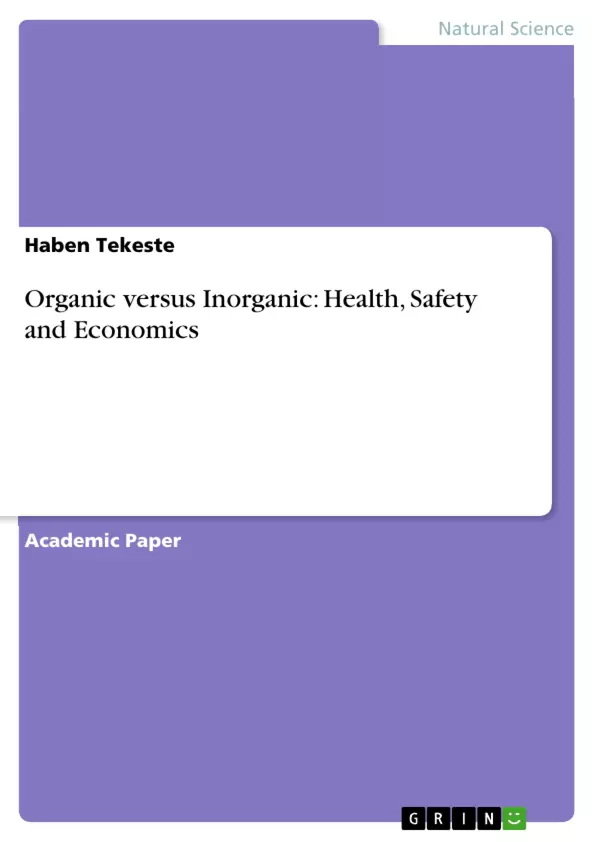In today's world, more people are becoming concerned regarding their diet. As people are becoming aware of diet and nutrition, they want to make the right choice. The choices that people's diet fall are either organic or inorganic food. This paper will compare both types of foods in terms of health, environmental safety and economics. It will also answer several stereotypes people have regarding both kind of food.
Food is an integral part of our lives, contributing essential nutrients for our growth and well-being. In today's agricultural practices, we encounter two main categories of food: organic and inorganic, the latter often referred to as conventional food. The debate between these two types of food has persisted for quite some time, encompassing considerations of health, economics, and safety.
One prominent aspect differentiating organic and inorganic (conventional) food is their impact on consumer health and safety. Health professionals and consumers have engaged in long-standing debates about whether organic food is healthier than conventional options. Experiments on animals have shown that diets comprising organic and inorganic components can have distinct effects on their bodies.
With growing awareness, people are increasingly concerned about their dietary choices. Many believe that organic foods are both safe and rich in nutrients. This belief leads some individuals to prefer organic over conventional foods, even though scientific research has found only marginal differences in nutritional value. It's important to note that individual health is influenced by various factors such as lifestyle and environment, making it challenging to attribute health outcomes solely to organic food consumption.
Inhaltsverzeichnis (Table of Contents)
- Health, Safety and Economics
- Health
- Organic vs. Inorganic Foods
- Pesticide Residues
- Microbiological Contamination
- Economic Considerations
Zielsetzung und Themenschwerpunkte (Objectives and Key Themes)
This text aims to provide a comprehensive overview of the differences between organic and inorganic (conventional) food production methods, focusing on their implications for consumer health, safety, and the economy. It explores the debate surrounding the health benefits of organic food, examines the environmental impacts of conventional farming practices, and delves into the economic considerations of both organic and inorganic food production and consumption.
- Health benefits and risks associated with organic and conventional food consumption
- Environmental impact of organic and conventional farming practices
- Economic factors influencing the production and pricing of organic and conventional food
- Consumer awareness and preference for organic food
- Safety considerations related to pesticide residues and microbiological contamination
Zusammenfassung der Kapitel (Chapter Summaries)
The text begins by introducing the concept of organic and inorganic food production, highlighting the historical debate surrounding their respective health benefits. It then dives into the health implications of each, examining the potential benefits of organic food while also addressing concerns regarding pesticide residues and microbiological contamination. The text explores the environmental impact of conventional farming practices, including issues such as soil erosion and water contamination due to the use of chemicals.
Finally, the text delves into the economic aspects of organic and inorganic food production and consumption, examining the factors contributing to the higher price of organic food. It explores the growing consumer demand for organic food, the increasing market share of organic products, and the implications of these trends on the food industry.
Schlüsselwörter (Keywords)
The key terms and concepts discussed in this text include: organic food, inorganic food, conventional farming, health benefits, pesticide residues, microbiological contamination, environmental impact, economic factors, consumer demand, and market trends.
- Quote paper
- Haben Tekeste (Author), 2020, Organic versus Inorganic: Health, Safety and Economics, Munich, GRIN Verlag, https://www.grin.com/document/907151



